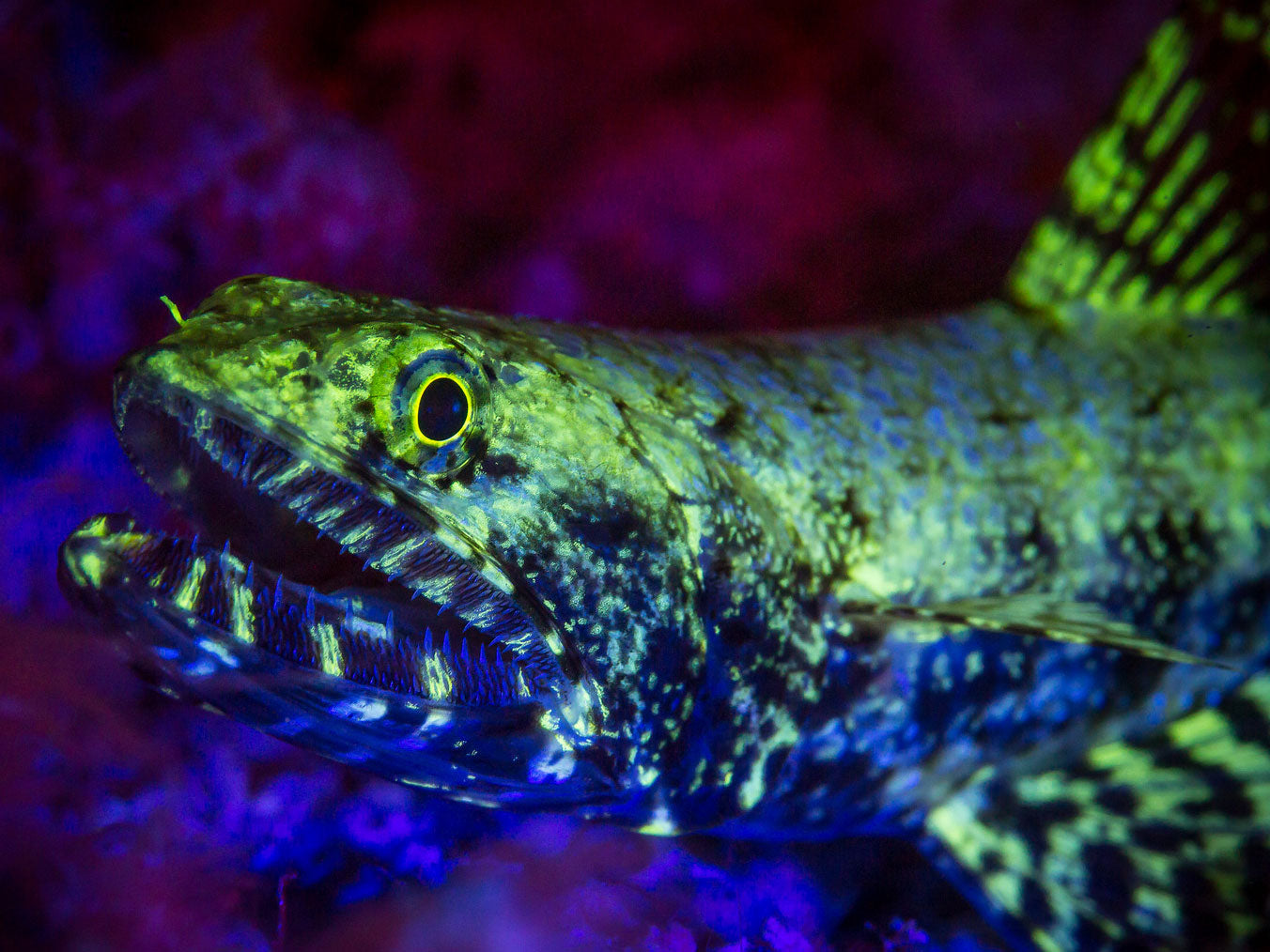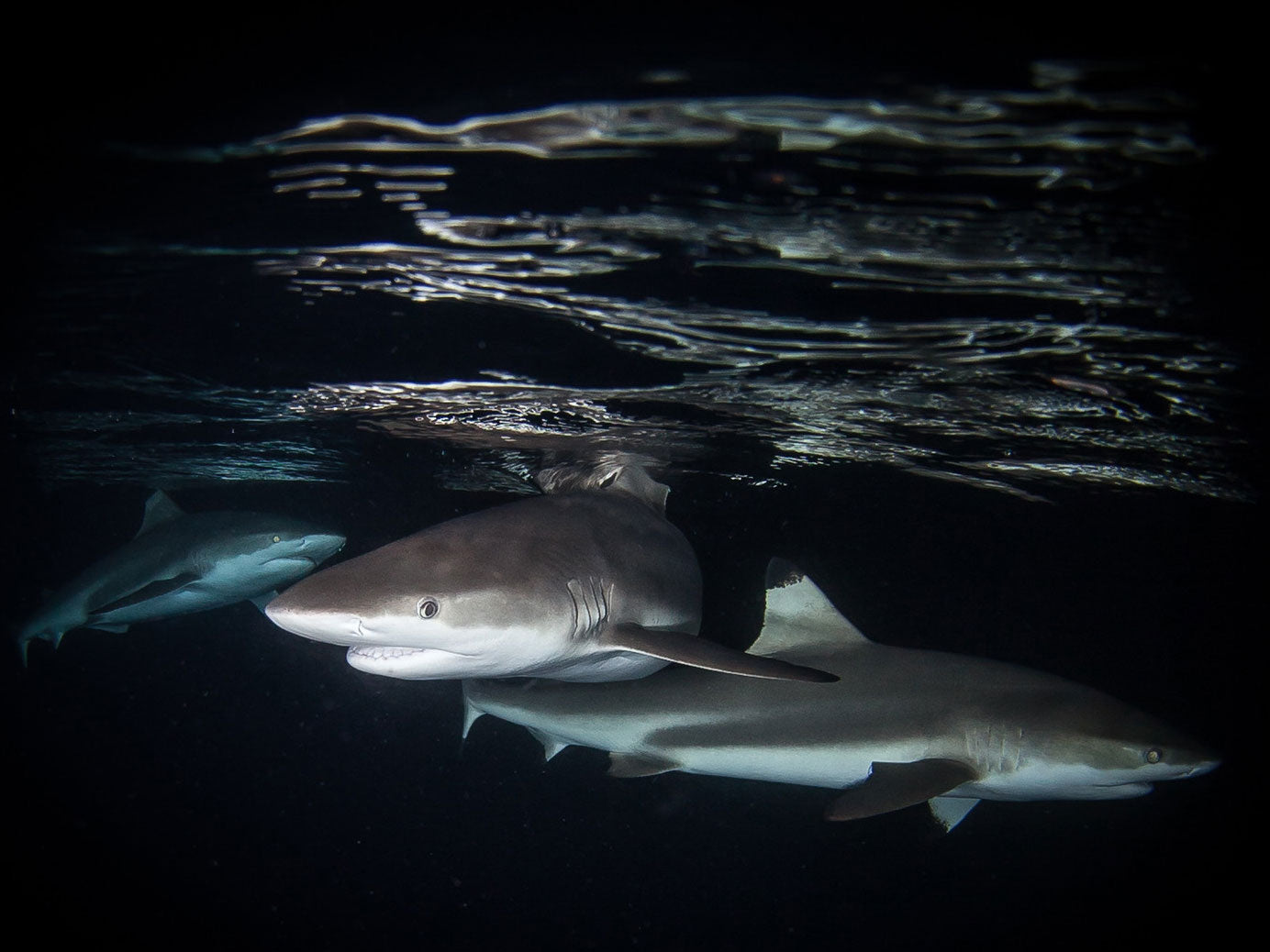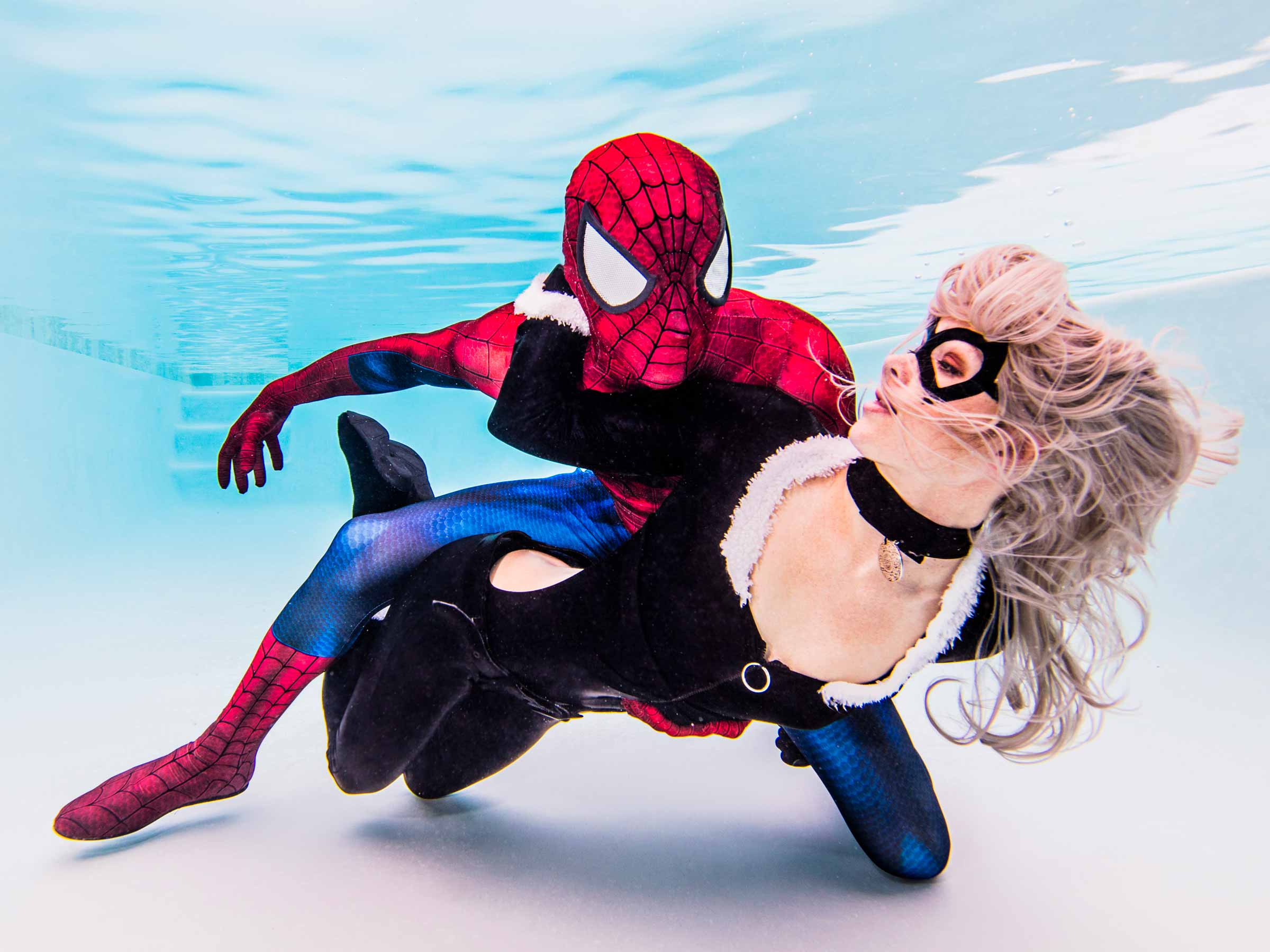Fluorescence (or "fluoro") can be seen by using a dichroic "excitation" filter on your strobe or light, and a yellow "barrier" filter on your mask and in front of your camera's lens. Many different types of corals and creatures fluoresce—get out there and explore!
The fluoro night diving experience can be disconcerting initially. Any fluorescing hard corals will be visible- and very bright, even from distances. Meanwhile, anything that is not fluorescing (most of the reef) will be almost invisible. Turning on a standard white diving light will show you the whole scene but totally kill the fluoro mood.
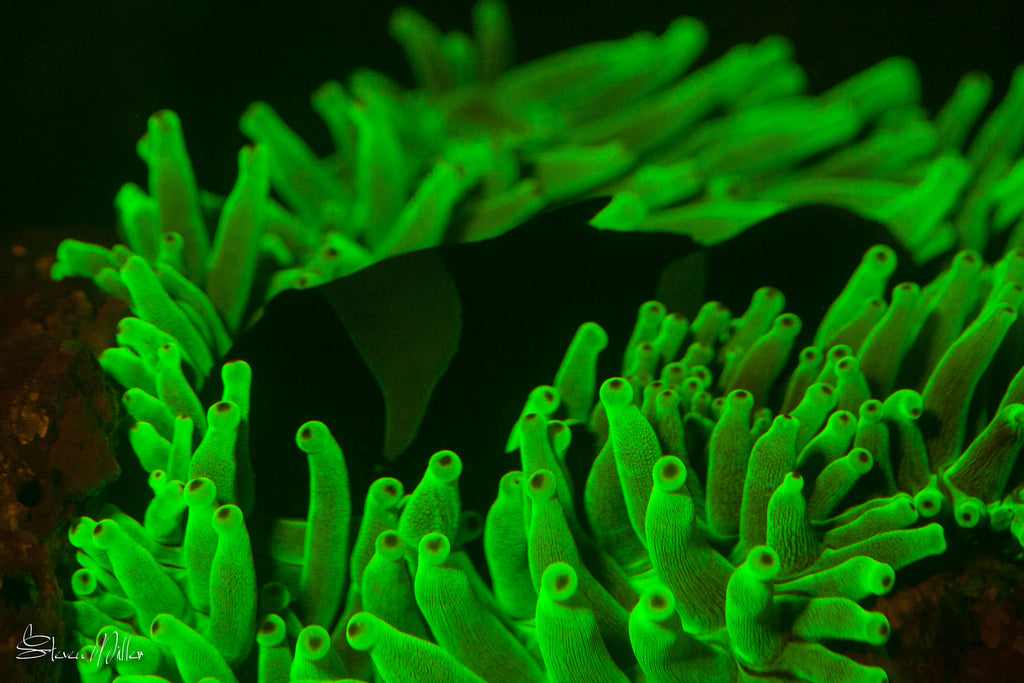
The clownfish in the center is almost invisible because he is not Fluorescing.
Luminance
An alternative to straight fluoro photography is to add the element of luminance to the scene. These images were accomplished by placing colored gels (red, orange, yellow and blue) over Ikelite Gamma lights and aiming them at the scene. This applies a relatively small amount of exposure to the scene, since we were converting the flash from two DS161 strobes into the requisite Dichroic blue light.

In these images, the bright green is fluorescence and the other colors are luminance. The Lizardfish is famous for fluorescing extremely, as you can see in the images.
The advantage to adding luminance is that you can now shoot anything on the reef that you wish- whether it is fluorescing or not. You also see around you as you swim, in colors dictated by your choice of gels. Placing the yellow filter over your mask allows you to look above and below the filter to turn the effect on and off.
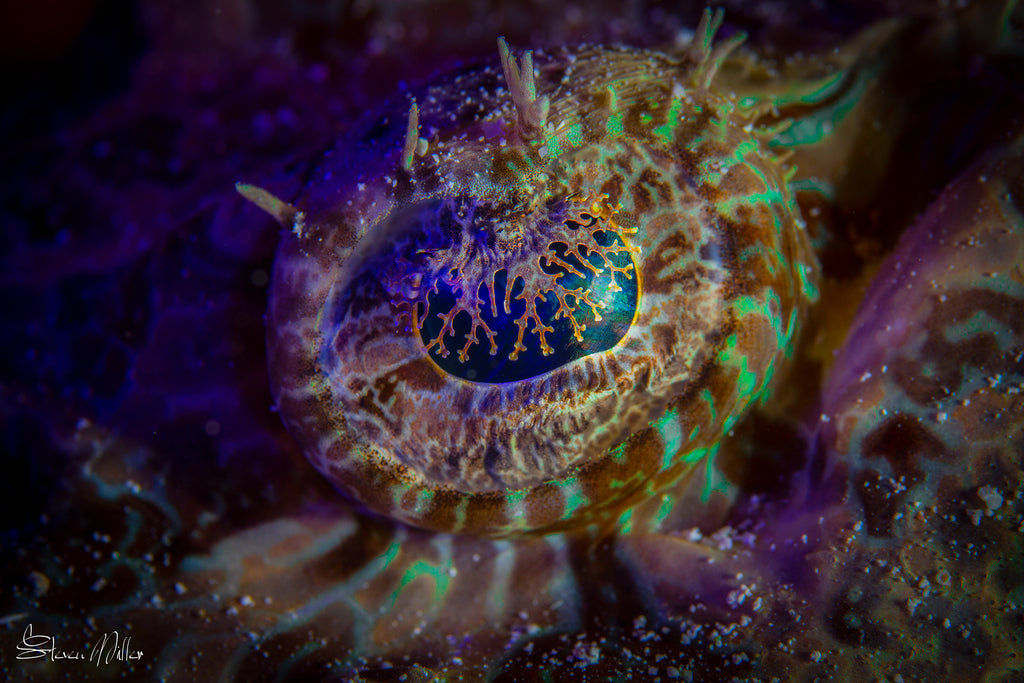
The Crocodilefish (eye) in these images is not fluorescing at all.. with pure Fluoro he would not be able to be captured, but with the Luminance element, the colors simply came from the color of our light on that night dive.
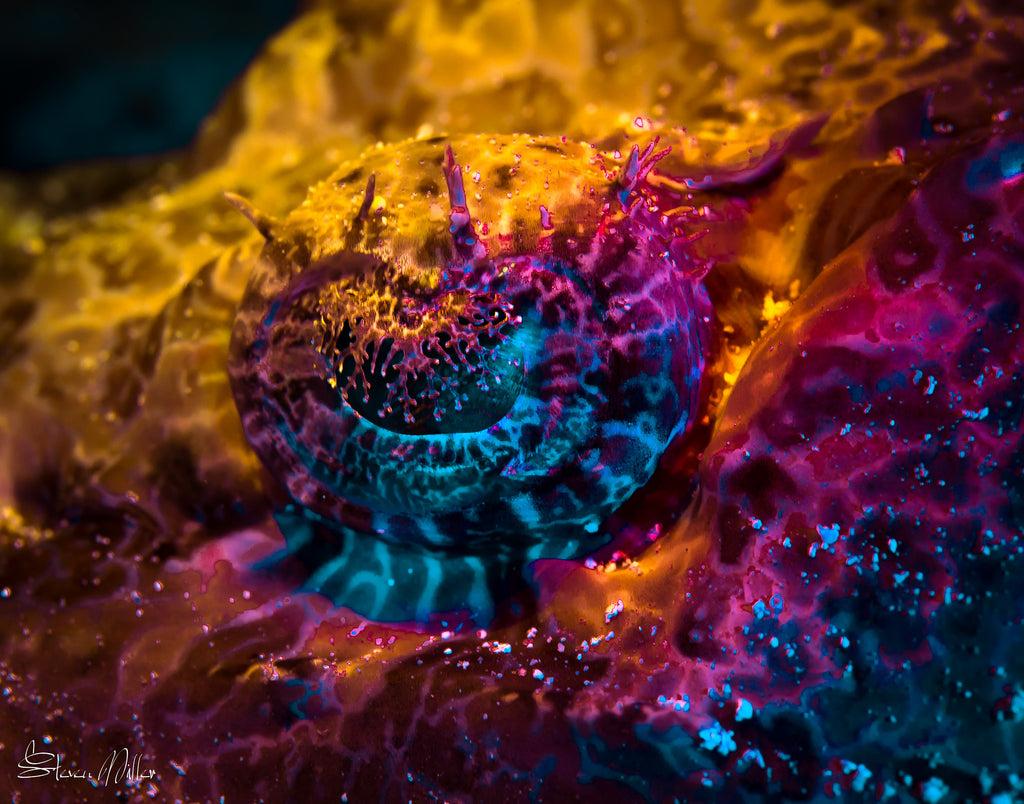
You can always turn your luminance off, and see and shoot pure fluoro photography. But we think you will find the experience of night diving this way more comfortable... and you'll have much less chance of bumping into something that you didn't see because it wasn't fluorescing.
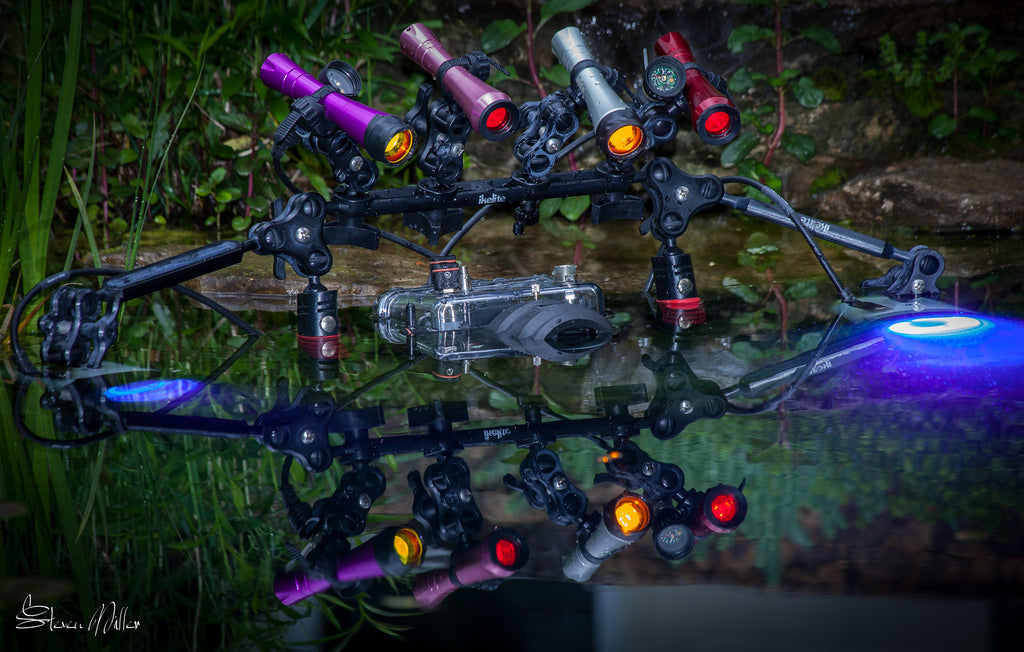
Exposures for this Gallery were ISO 400 • f/11 • 1/100th • Canon EOS 100D Rebel SL1 DSLR with 60mm Macro Lens; The strobes were set to TTL, and firing close to full power. All of these images were underexposed in camera, brought back in Lightroom from the RAW.











